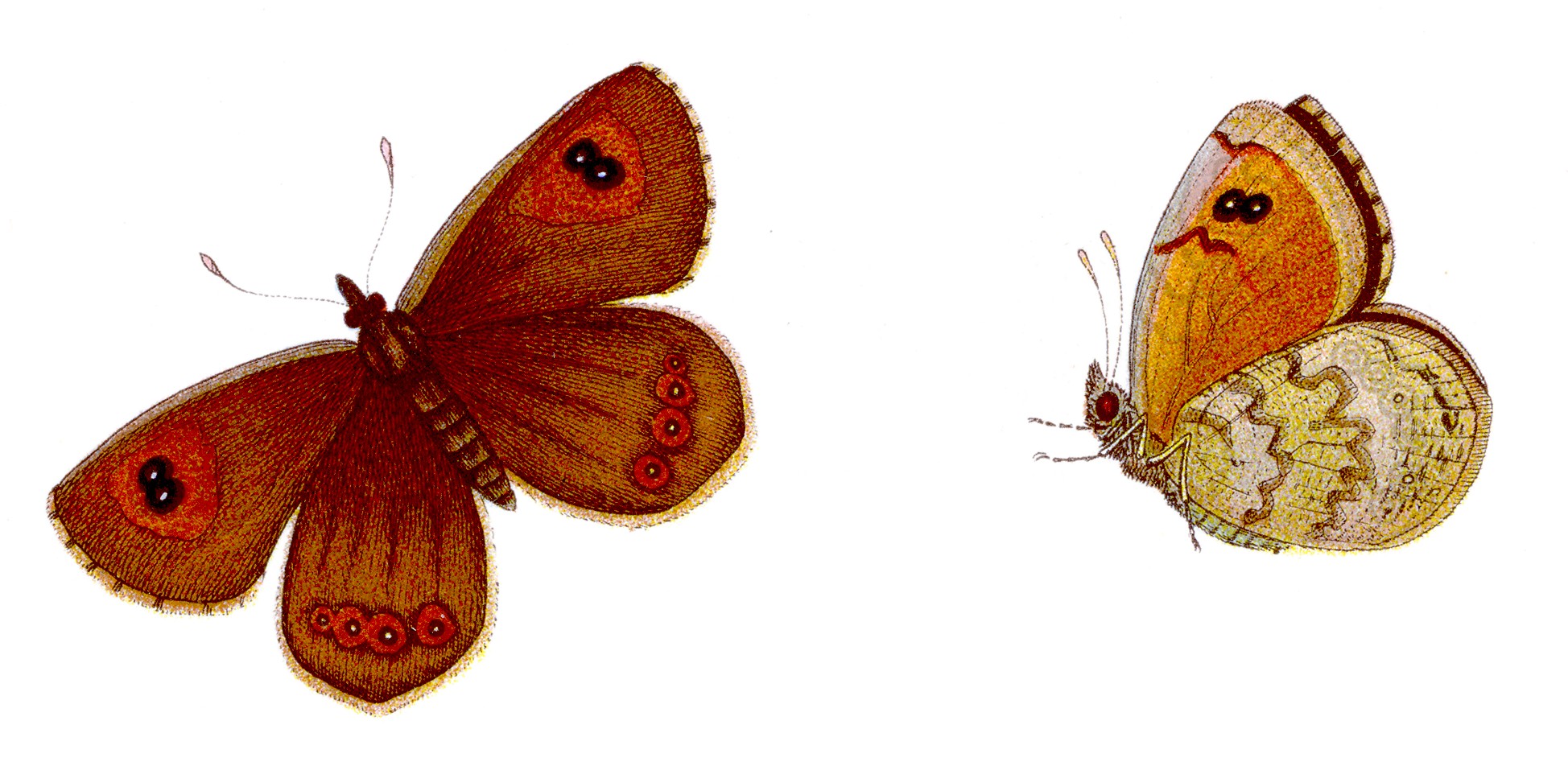- Erebia tyndarus
:"This article is about the butterfly described by E.J.C. Esper in 1781. Dyar in 1903 used the name for some other, undetermined, species of "
Erebia ".Taxobox
name = Swiss Brassy Ringlet

image_width = 260px
regnum =Animal ia
phylum =Arthropod a
classis =Insect a
ordo =Lepidoptera
unranked_familia =Rhopalocera
superfamilia =Papilionoidea
familia =Nymphalidae
subfamilia =Satyrinae
tribus =Satyrini
subtribus =Erebiina
genus = "Erebia "
species = "E. tyndarus"
binomial = "Erebia tyndarus"
binomial_authority = (Esper, 1781)
synonyms ="Papilio tyndarus" Esper, 1781The Swiss Brassy Ringlet, "Erebia tyndarus", is a
Europe anbrush-footed butterfly species of thesubfamily Satyrinae . It is found above thetreeline , at heights of 1,200-2,700 meters ASL, in theAlps ofSwitzerland ,Liechtenstein andAustria nVorarlberg , and adjacent regions.Albre "et al." (2008)]Description and ecology
This mid-sized member of the
genus "Erebia " has a wingspan around 35 mm. The blackish-brown upperwings typical of this genus; they have abrass y sheen in this and related species, hence the name. The upper forewings, and sometimes the upper hindwings also, bear a coppery patch, near the tip in the former and running parallel to the outer margin in the latter.In this patch there are black
eyespot s with a white dot in the middle, two immediately next to each other in the forewings and 3-4 more evenly spaced ones in the hindwings. However, the hindwing spots may be reduced or entirely absent, particularly in the males which also have a darker coloration overall. The underwings are crpytically colored in lighter greyish brown. A darker band arches between the forward and back margins of the hindwing, which has a prominent silvery sheen also found in closely related species of "Erebia" and conspicuous at a distance when these butterflies fly around in the sun. The reddish patches and the eyespots of the forewing also occur on the underwings, those of the hindwings usually do not.The adults are found only for a brief time during summer, mainly in July and August. The Swiss Brassy Ringlet is
univoltine and itscaterpillar s feed onPoaceae grass es, especiallySheep's Fescue ("Festuca ovina"),Mat-grass ("Nardus stricta "), and various otherfescue s ("Festuca") andmeadow-grass es ("Poa"). They overwinter andpupate on the ground around May/June.ystematics, taxonomy and evolution
The Swiss Brassy Ringlet belongs to the
brassy ringlet group of itsgenus "Erebia ". These are found intaiga and Alpine habitat acrossEurasia , with one population in comparatively recent times colonizingNorth America . The brassy ringlet group, like many "Erebia", has a complicatedtaxonomy , with scores of "variants" having been named in the late 19th and early20th century . Most of these in fact were simply aberrations, local or seasonal forms. As this was realized, the brassy ringlets of theAlps andPyrenees were united in "E. tyndarus", either as asuperspecies or as aspecies .In recent times, this question has been restudied, including the
DNA sequence data available nowadays. The view that only a single species of this non-migratory butterfly with restrictedhabitat preferences occurs in far-flung localities like the Sierra Nevada of southernSpain or theJulian Alps ofSlovenia is generally considered obsolete.Rather, it seems that quite a few proper species are involved. The Swiss Brassy Ringlet in particular is part of a
cryptic species complex from theAlps . These diverged at the end of the Riss/Saale glaciation roughly 130.000 years ago, when the availablehabitat shifted up the moutains. The ancestors of the Alpine brassy ringlets had lived in the lowlands when the Alps were entirely covered by ice, and as the ice retreated, their typicalhabitat moved upwards, and the butterflies with them. Thus, different populations became isolated in different mountain ranges and withgene flow between them restricted started toevolve into distinct species.The brassy ringlets from the Alps, the closest relatives of "E. tyndarus", consist of three further species:
* "Erebia nivalis " (de Lesse's Brassy Ringlet ), found in the highest regions of theCentral Eastern Alps ofAustria
* "Erebia calcaria " (Lorkovic's Brassy Ringlet ), from theJulian Alps which straddle the borders of Austria,Italy andSlovenia
* "Erebia cassioides " (Common Brassy Ringlet ), which occurs on meadows somewhat further downhill than the other species and consequently is widely distributed in the rest of the Alps.The last is presumably closest to the
last common ancestor s of the Alpine brassy ringlets.Footnotes
References
* (2008): Molecular phylogeny of the "Erebia tyndarus" (Lepidoptera, Rhopalocera, Nymphalidae, Satyrinae) species group combining CoxII and ND5 mitochondrial genes: A case study of a recent radiation. "Mol. Phylogenet. Evol." 47(1): 196–210. doi|10.1016/j.ympev.2008.01.009 (HTML abstract)
Wikimedia Foundation. 2010.
